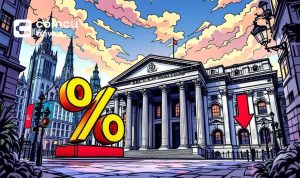A bubble, in the context of cryptocurrencies, refers to a situation where the price of a particular coin or digital asset is significantly higher than its actual value. This phenomenon is often associated with speculation and can lead to a rapid increase in the market value followed by a sudden crash. Understanding the concept of a bubble is essential for newcomers to the blockchain and cryptocurrency space.
The belief that cryptocurrencies are in a bubble has been a subject of debate among commentators for a long time. Bitcoin, being the most well-known cryptocurrency, has often been the center of this discussion. Critics argue that cryptocurrencies have no intrinsic value and are primarily used for speculative purposes. They point to the low levels of adoption in traditional industries and everyday transactions as evidence that cryptocurrencies are a bubble waiting to burst.
However, it is important to note that the value of cryptocurrencies is not solely determined by their adoption in the traditional economy. The underlying technology behind cryptocurrencies, known as blockchain, has the potential to revolutionize various industries and create new use cases. Ethereum is a prime example of a blockchain platform that offers more than just a speculative asset.
Ethereum serves as the foundation for decentralized finance (DeFi), a rapidly growing ecosystem that aims to provide alternative financial products and services. Unlike traditional financial systems that rely on intermediaries such as banks, DeFi leverages blockchain technology to enable peer-to-peer transactions without the need for a central authority.
In the DeFi ecosystem, various decentralized applications (dApps) are built on top of the Ethereum blockchain, allowing users to lend, borrow, trade, and invest their digital assets without relying on a third party. These dApps typically have their native tokens, which can be used to participate in the governance of the protocol or provide liquidity to the platform.
One of the main arguments against the existence of a bubble in the cryptocurrency market is the real-world utility that these decentralized applications offer. For example, platforms like Aave and Compound enable users to earn interest on their digital assets by lending them to others. Similarly, Uniswap facilitates decentralized trading by allowing users to swap tokens directly from their wallets.
Moreover, decentralized finance also extends beyond the traditional financial system. For instance, insurance platforms like Nexus Mutual provide decentralized coverage against smart contract vulnerabilities or hacks. Decentralized stablecoins like DAI aim to maintain a stable value through algorithmic mechanisms, providing users with a more stable alternative to volatile cryptocurrencies.
While the price of cryptocurrencies can experience significant fluctuations and speculative behavior, the existence of real-world use cases and tangible utility in the form of decentralized finance indicates that there is more to cryptocurrencies than just speculation. As the blockchain technology continues to evolve and gain mainstream adoption, the value of cryptocurrencies may become increasingly evident.
It is worth noting that bubbles are not exclusive to the cryptocurrency market. Throughout history, various industries and assets have experienced bubble-like situations, including the dot-com bubble in the late 1990s and the housing bubble in the mid-2000s. Bubbles occur when market participants drive up prices based on speculative demand rather than the underlying value of the asset.
However, it is important for investors and participants in the cryptocurrency market to exercise caution and conduct thorough research before making investment decisions. While cryptocurrencies have the potential for significant returns, they are also accompanied by inherent risks. Understanding the dynamics of the market and evaluating the fundamental value of cryptocurrencies can help distinguish between speculative hype and genuine opportunities.
In conclusion, a bubble in the context of cryptocurrencies refers to a situation where the price of a coin or digital asset surpasses its actual value. While skeptics argue that cryptocurrencies are solely driven by speculation, the rise of decentralized finance and the real-world applications of blockchain technology demonstrate the potential for genuine utility. As with any investment, it is essential to approach the cryptocurrency market with caution and conduct proper research to differentiate between speculative bubbles and long-term opportunities.














